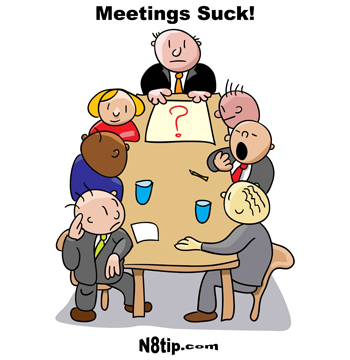Can a Meeting be a Game Changer?
 Why is it that so many of us don’t like meetings? I personally like the feeling of getting a bunch of innovative people together generating better and smarter ideas than any one of us could come up with on our own. Most people have a hard time seeing a meeting as a game changer. Would you think a meeting could speed up change or push you ahead of the competition to become the global leader in the industry?
Why is it that so many of us don’t like meetings? I personally like the feeling of getting a bunch of innovative people together generating better and smarter ideas than any one of us could come up with on our own. Most people have a hard time seeing a meeting as a game changer. Would you think a meeting could speed up change or push you ahead of the competition to become the global leader in the industry?
Well that is exactly what happened with Wal-Mart. Their Saturday morning meetings created a lead time in the industry and catapulted Wal-Mart up to one of the highest grossing companies in the world. You might say, “Excuse me, a meeting did that?” Well, in Verne Harnish’s book “The Greatest Business Decisions of All Time,” Hank Gilman makes that case.
It began back in the beginning when Sam Walton started this Saturday morning meetings in his first store in Bentonville, AR. He held these meetings to gather all of his people in one place to figure out what was selling and what was not. He would look at different metrics and determine what needed to be changed based on what had happened over the previous week. Then, with the managers brainstorming, they would make changes, put items on sale that needed to go, and move things around to get noticed. After this, they immediately went out and implemented these ideas to take advantage of the strong weekend activity.
Stay ahead of the competition. This was key. By simply staying days ahead, they eventually zoomed past the industry leaders, such as Sears and Kmart. When interviewed, Walton’s friend and successor David Glass explained that a big accomplishment of the Saturday meetings was to collect and distribute information to all of those in the company, so it could be shared. Sam felt that everyone should work together as partners and should know what was going on.
This meeting allowed Wal-Mart’s people to gather and discuss ideas, and they could have all the corrections in place by noon on Saturday. This would put Wal-Mart ten days ahead of the likes of Kmart and Sears. How did the meetings work? The employees would share their best ideas and concepts. The idea of a Wal-Mart greeter came from this. Some executives would show best practices videos. To top it off, if the meetings were getting stale, they would bring in guest speakers like Bill Clinton, Adam Sandler, and Oprah Winfrey.
What are you doing in your meetings to stay just ahead of the competition and share information with your employees? How are you making them feel like partners? And yes, even the best of us can have stale meetings, so what are you doing to make sure they are interesting?